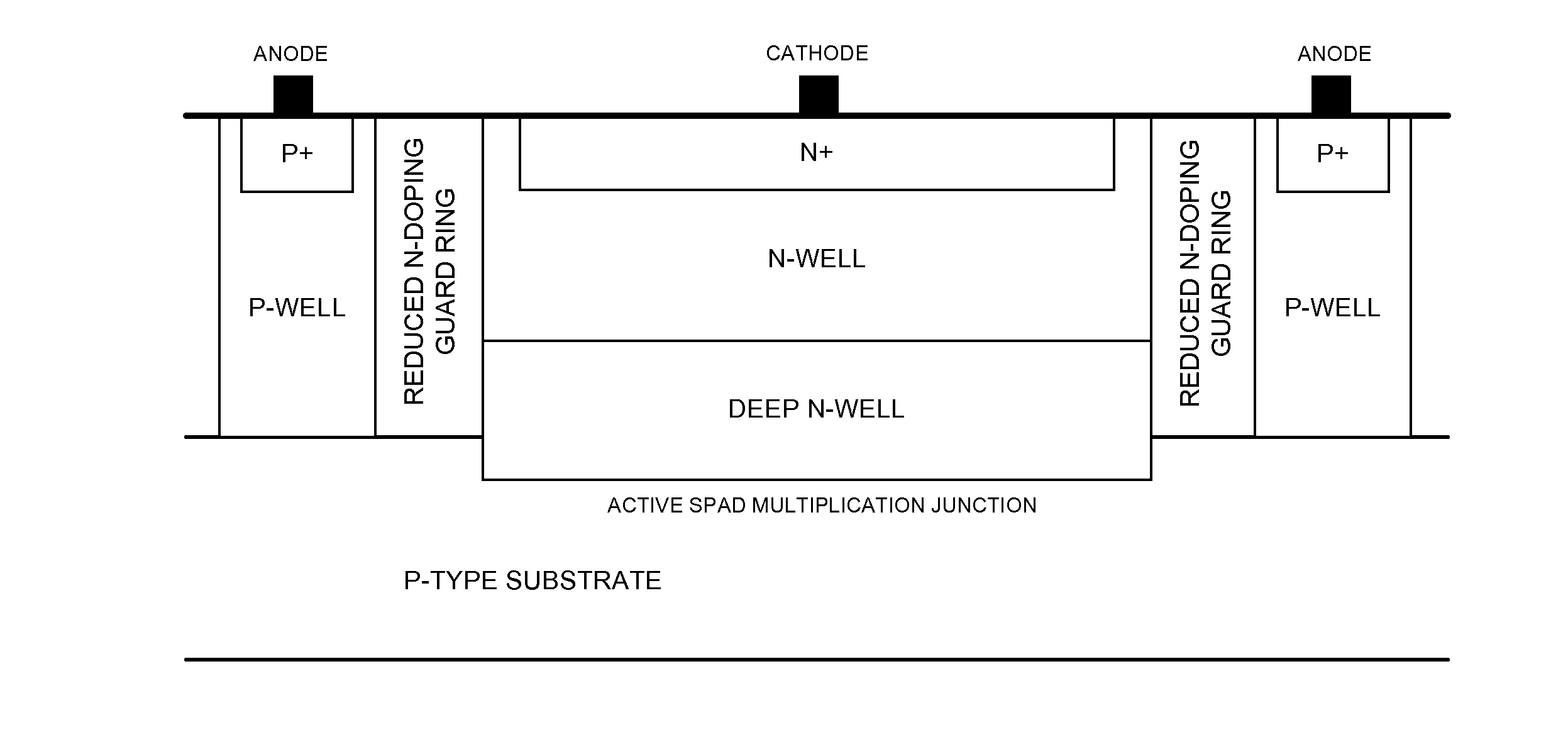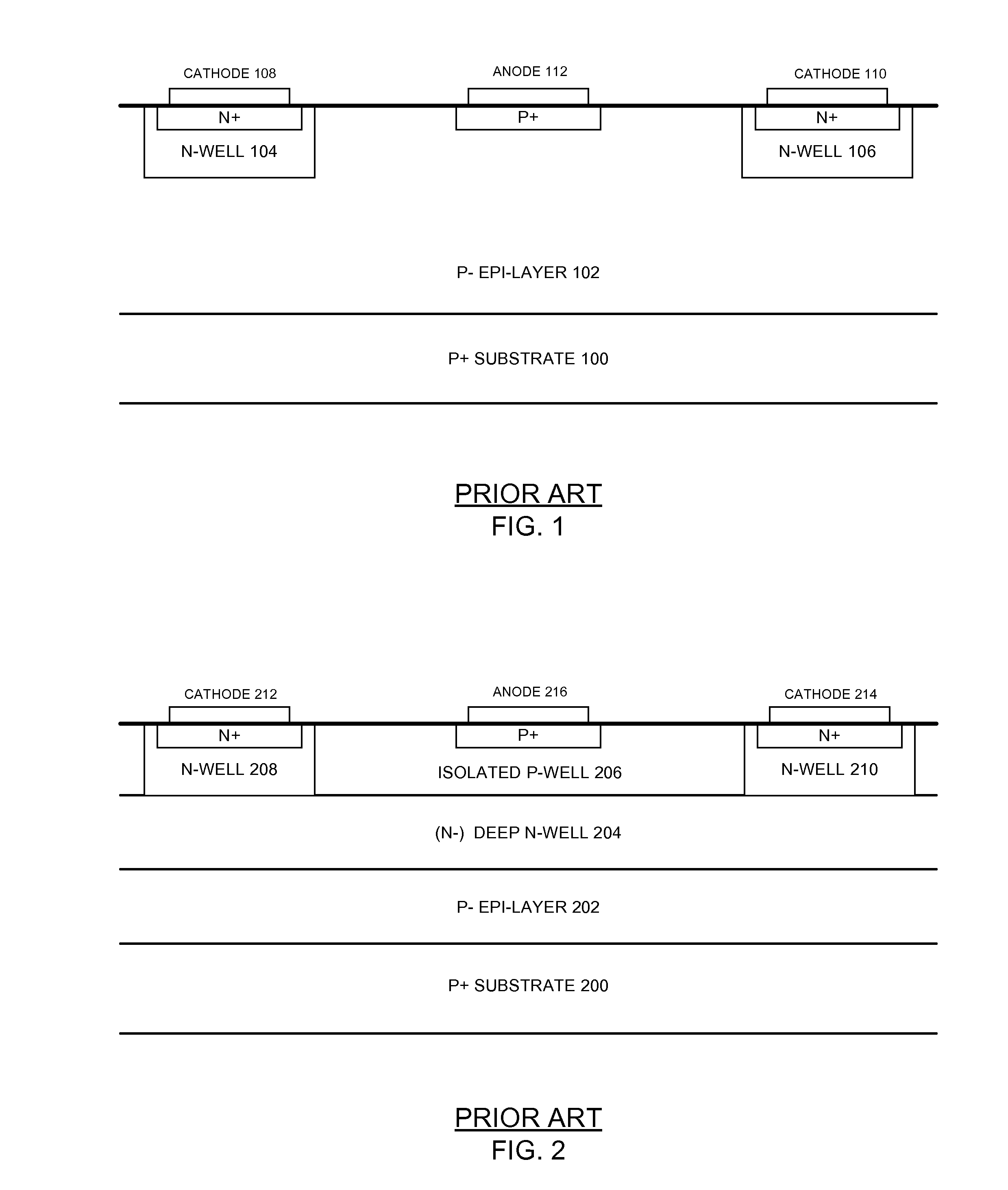Single photon avalanche diode for CMOS circuits
a technology of cmos circuit and single photon, which is applied in the field of single photon avalanche diodes, can solve problems such as inability to meet the requirements of production, achieve the effects of improving broad spectrum sensitivity, reducing circuit complexity, and improving blue respons
- Summary
- Abstract
- Description
- Claims
- Application Information
AI Technical Summary
Benefits of technology
Problems solved by technology
Method used
Image
Examples
Embodiment Construction
[0097]In the foregoing description, it will be appreciated that the examples given with regard to p-type and n-type materials can apply equally if the conductivity types are reversed (that is, n-type material is replaced by p-type and vice versa) with appropriate reversals of voltages, anodes / cathodes and the like. Portions of this document assume a p-type substrate as this is mostly standard in CMOS integrated circuits.
[0098]FIG. 4 is a schematic of a first embodiment of a single photon avalanche diode (SPAD) that is fabricated as part of a CMOS integrated circuit 400. The SPAD 404 is formed in the epitaxial layer (‘epi-layer’) 402 that has been grown on a substrate (not shown). A deep well 406 is implanted into the epi-layer 402 and covered with a well of the same conductivity type 408 that is connected in turn to a heavily doped electrode implant 410 which is connected to the contact 412. An implant of opposite conductivity type 416, 422 is formed around a guard ring 428, with a ...
PUM
 Login to View More
Login to View More Abstract
Description
Claims
Application Information
 Login to View More
Login to View More - R&D
- Intellectual Property
- Life Sciences
- Materials
- Tech Scout
- Unparalleled Data Quality
- Higher Quality Content
- 60% Fewer Hallucinations
Browse by: Latest US Patents, China's latest patents, Technical Efficacy Thesaurus, Application Domain, Technology Topic, Popular Technical Reports.
© 2025 PatSnap. All rights reserved.Legal|Privacy policy|Modern Slavery Act Transparency Statement|Sitemap|About US| Contact US: help@patsnap.com



